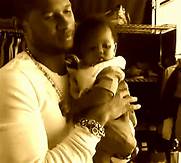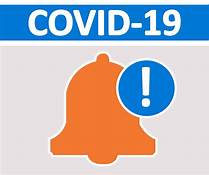 Checkup: How Can Parents Help Kids Deal With Changing COVID-19 Policies?
Checkup: How Can Parents Help Kids Deal With Changing COVID-19 Policies?
The last two years have created a constantly shifting pandemic landscape. With the arrival of each new variant and wave of COVID-19 infections, children and adults alike have experienced the whipsaw effect of adjusting to new and sometimes seemingly contradictory rules and recommendations, as scientists learn more about how the virus spreads.
What can parents do to help their kids adjust?
Betsy Lloyd is a licensed school counselor at Charlotte Central School. A mental health professional experienced in working with children who are dealing with trauma, Lloyd uses mindfulness training to help students recognize their own emotions before reacting to them. As she put it, “Mindfulness creates the space between whatever is happening to us and what we want to do about it.”
Lloyd offered advice for helping parents recognize when their kids are having difficulty coping with the changes wrought by the pandemic, and what they can do to ease their worries.
KIDS VT: How have the K-8 students in your school dealt with the most recent lifting of pandemic restrictions?
BETSY LLOYD: Kids have a sense of resilience far beyond that of adults. They have this ability to be told, “This is how it’s going to be right now,” then accept what is and move forward. We’ve told kids for so long that we all have to wear masks and socially distance — to take care of ourselves, our families, our friends and people who are vulnerable — then all of a sudden, we say, “No, we’re all good. We don’t have to wear masks anymore.”
That first week back with no masks, there was a palpable energy and buzz, a sheer excitement and joy that this was the first step to getting back to normalcy. But there was also some apprehension: “Should we be doing this?”
KVT: How did kids react?
BL: Some were like, “This is really scary. I have family members I’m worried about getting sick. And I don’t understand why this is all happening so fast.” We should always acknowledge and validate how our kids feel. We can’t dismiss those feelings and say, “Oh, it’s fine. You’re being silly. Don’t worry about it!” That creates a feeling on kids’ part that, How I feel is wrong, and it’s not OK for me to be scared or worried.
KVT: What should parents watch for as these transitions occur?
BL: Oftentimes we don’t notice a change in our kids until it shows in their behavior. Parents might notice a change in their child’s mood, especially with younger kids who can’t really talk about what’s going on inside. Feelings really start in the body. You may notice they’re not feeling well. Their stomach hurts, they have headaches or they don’t want to go to school anymore. In my house we call it “worry tummy.” Or it may seem like kids cannot sit still, and that’s not typical for them. They may have trouble concentrating. This year I’ve seen a lot of kids who are having trouble falling asleep, because those worries come into your mind as your body relaxes.
KVT: What can parents do to help?
BL: Be with them in those moments so they know it’s OK to feel that way. Especially if it’s a really strong feeling, sometimes it’s a good idea to wait a few hours or even a day before you talk about it. When they’re calm again, circle back and say, “Yesterday when that happened, I’m wondering if you were feeling worried about going to school and not wearing your mask.” With any child, of any age, have that conversation at a time when they’re in a calm and regulated state. It can’t be when they’re in that fight-or-flight mode. Allow them to feel those emotions, then give them strategies for dealing with them.
KVT: What kind of strategies?
BL: If your kids start to feel worried, ask them, “What would feel good to you right now?” Maybe take a break. Go for a walk, get some space from other people or talk through those feelings so they don’t get stuck in them. Also, provide some facts, such as, “We’re doing this because the science says it’s OK now, and we’re at a point where we have a level of vaccinations that healthy, young people don’t have to wear masks.” Honor how your kids feel and allow them to have those feelings. And if they want to continue wearing a mask if that makes them feel more comfortable, that’s OK, too.
KVT: How have kids reacted to testing positive or getting sick with COVID-19?
BL: In the beginning, if there was a positive COVID test, there was this sense that people had done something wrong. I remember my own daughter, who’s in high school, saying, “If I get it, everyone is going to think badly of me.” But as time has gone on, it’s become more widespread and normalized. Kids are like, “Had COVID. Eh.” It’s not such a taboo thing anymore. Now, they want to share what the experience was like.
KVT: The pandemic rules may keep changing for some time. Any other advice for helping kids cope?
BL: It’s really important that we acknowledge to our kids when they’ve been flexible. They have ridden out these incredibly scary waves of ups and downs. It’s going to take some time to process — kids and adults alike. There will probably be lasting repercussions from all this. Just being aware that things don’t always move linearly. It could be a few steps forward and a couple of steps back. For all of us.







